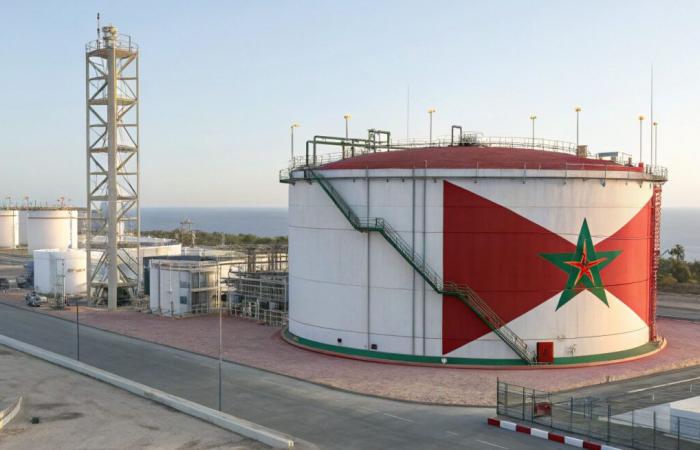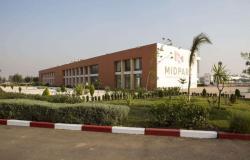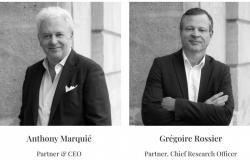A floating methanier terminal project carried by the country’s authorities, but which will be developed by private operators, aims to diversify the supply of the kingdom in natural gas. It is added to the long list of construction sites on Nador West Med.
An additional site for Nador West Med. On April 21, Leila Benali, Minister for the Energy Transition of Morocco, announced the launch of an International Call for Manifestation of Interest (Friend) for the achievement of an GNL terminal. This floating terminal will be located on the site of the future Mediterranean port in deep waters currently in the advanced phase of work, located on the western facade of the Cape of the Three Fourches. The call for proposition must run until the end of July 2025. It aims to select an operator as well as possible investors for the realization of this structuring energy infrastructure whose commissioning could take place in 2027. According to government plans, the GNL terminal must allow the Cherifian kingdom to diversify its supply in natural gas. Until 2021, a good part of the natural gas consumed in Morocco came from Algeria as part of a long -term contract based on the Maghreb Europe (GME) gas pipeline which linked Algeria, Morocco and Spain. At the end of this 25 -year contract, on October 31, 2021, given the recurring security tensions between Morocco and Algeria, the “neighbor of the East” decided not to extend it. Since then, most of the natural gas used in Morocco comes from Spain via the terminal section of the GME whose direction has been reversed. With this project, the Cherifian kingdom intends in the future to have direct access to the world market by delivery of precious molecules by midmen to Nador West Med.
The Nador port terminal will therefore be connected by a connection to be built (included in the appeal to manifestation of interest) to the Maghreb Europe gas pipeline.
According to the latest public reports, Morocco consumed 0.77 billion m³ of natural gas in 2021 for a modest domestic production of 0.11 billion m³. Given increasing needs, consumption should reach 8 billion m3 by 10 years, according to Minister Leila Benali. Besides regular, but modest growth, of the needs of the industry, this increase is mainly explained by a future recourse to natural gas for the production of electricity, in particular to reduce the share of coal (around 55 % currently).
Today, Morocco mainly has two combined cycle gas plants, in Tahaddart (384 MW) south of Tangier and Aïn Béni Mathar (450 MW) in the north of the country. However, the country projects the construction of new means of gas production. In this sense, the call for manifestation of interest on Nador West Med also includes construction in the area of a central cycle combined with gas of 1,200 MW. This will be added to the project in the study phase of the Al Wahda Central Central, located near the dam of the same name to sixty km as the crow flies north of Fez. This development is conducted by the National Water and Electricity Office of Morocco (ONEE) and relates to the construction of a combined cycle power plant of 990 MW in two tranches at an overall cost estimated at $ 420 million. According to documents published by the Moroccan Capital Market Authority at the end of January, funding will be provided at 20 % by the ONEE, but the largest part, namely 80 %, will come from Loans from Attijariwafa Bank and Bank of Africa, as well as capital raised by the two FT Flexanergy and FT Nord Energy.
Nador’s Little Terminal Project of Nador is slightly more extensions the list of projects of the future industrial-port complex developed by Nador West Med SA, a company 49 % owned by the Tangier Méditerranée (TMSA) special agency alongside the State, the Hassan II Fund and the National Ports Agency (ANP). The Mediterranean port, the first commissioning of which must take place before the end of 2026, will considerably strengthen the maritime connectivity of Morocco, already a leader in Africa in this area. Nador West Med includes as a reminder a first TC1 container terminal with an initial capacity of 3.4 million EVP conceded to Marsa Maroc in which Til, a subsidiary of the MSC group, took 50 % (minus 1 action) last February and which is the subject of 200 million euros in investment. This TC1 is completed by a second container terminal (TC2) which will be operated by a JV concluded in October 2024 between Marsa Maroc (51 %) and CMA CGM (49 %) with an initial volume of 1.2 million EVP and 280 million euros of investment provided by operators. To this is added a hydrocarbon terminal, a charcoal terminal and a terminal for various goods (3 million tonnes) as well as a 360 m roll quay. Not to mention a large free zone of 1500 hectares in the long term and various adjacent areas of activity.
These burst projects have attracted major financing names such as BERD, the African Development Bank, the Arab Fund for Economic and Social Development, not to mention the support of major Moroccan banks and the Hassan II fund.








